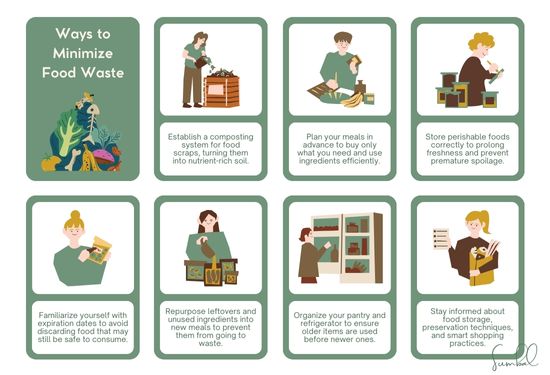As food costs continually increase, meal planning for the day has helped overcome some challenges, including food costs and waste. In this way, you can prevent buying more food than you did not plan on using what you already have. Here is a guide to help you plan your daily meals to reduce your expenditure, ensure that you get nutrients, and avoid wasted food.

1. Start with a Weekly Meal Plan
Identify a couple of meals you’d like to cook throughout the week, remembering to focus on basic dishes that can contain interchangeable components. For instance, a big bag of rice can be used for different dinner recipes, or beans can be used to make soups, wraps, and salads.
Affordable Ingredients
Ensure you build your meals from easily available ingredients like grains, beans, and locally available vegetables. These cheap products have a lot of nutritional value for the body.
Leftover Nights
Using leftover prepared foods a few nights a week also prevents food wastage. It's also helpful if you don't want to buy meals or cook.
2. Create a grocery list and follow it.
After planning your meals, make a detailed list of items you intend to buy. It is often encouraged to stick to shopping lists when making purchases.
Organize by Category
Organize your list in categories (produce, dairy, grains, etc.) so you don't have to walk around trying to locate a given item.
Check Your Pantry
Avoid overbuying your lists; you might already have or use expired food items in your pantry.
3. Batch Cooking and Prepping
Batch cooking is an effective strategy for decreasing the time and costs of preparing food. It means several meals can be prepared at once and used for several days.
Freeze in Portions
Preparing meals in larger portions and freezing them helps to work more and reheat food. This is handy for soups, stews, and casseroles, which freeze well.
Prep Ingredients in Advance
Having vegetables washed and cut or grains already cooked can help you reduce the time spent in the kitchen, reducing the amount of money spent on these convenience meals.

4. Repurpose Leftovers Creatively
Cook vegetables, grains, and proteins on a particular day of the week. No daily dish must be prepared with the same components and flavors; modification adds up to making them completely different meals.
Use Leftover Veggies
Even if vegetables were used for dinner the previous day, they may be used for lunch by incorporating eggs or rice.
Roasted Chicken
For example, a chicken roasted one evening may be eaten that night, used to make sandwiches the following morning, and the remaining portions used to prepare chicken soup at the end of the week.
5. Shop Seasonally and Buy in Bulk
The benefit of buying seasonal products is that they are sweet, tasty, and, most importantly, cheap. Grocery items such as rice, beans, oats, etc can be bought in large quantities, saving money in the future.
Local Deals and Discounts
Farmers' markets and local shops may have seasonal products cheaper during particular seasons. Purchasing in large quantities minimizes packaging and can even help bring the costs down further.
Packaged Convenience Foods
Consuming prepacked foods such as meals and single-use items is more expensive and leads to more waste. To save money and avoid the use of unnecessary packing materials, it's better to go for whole components instead.



